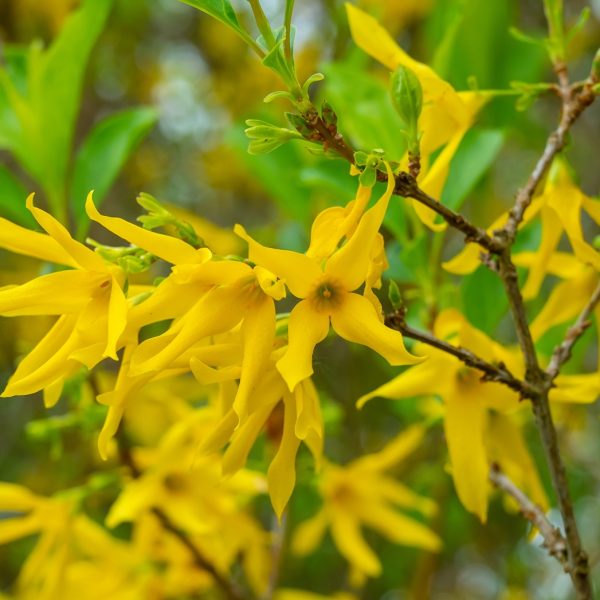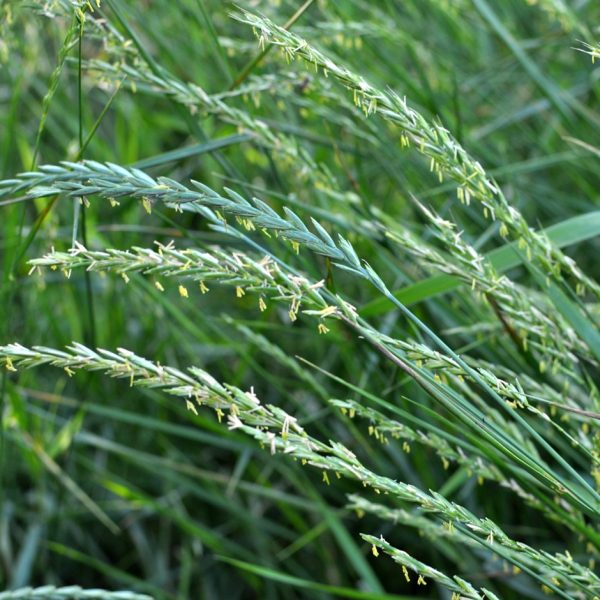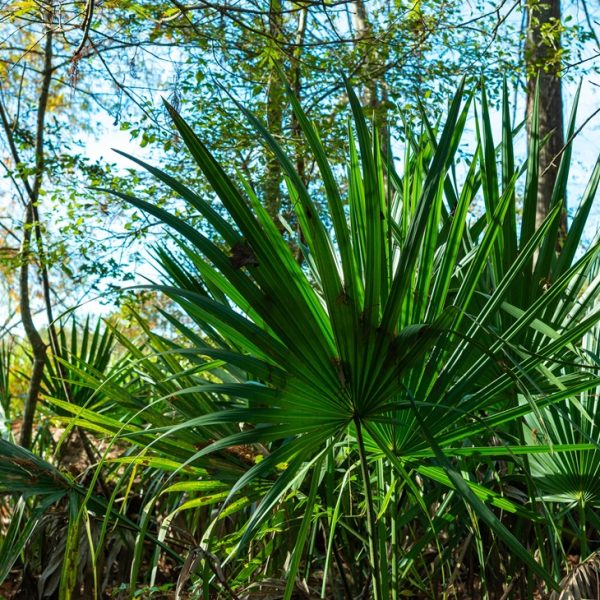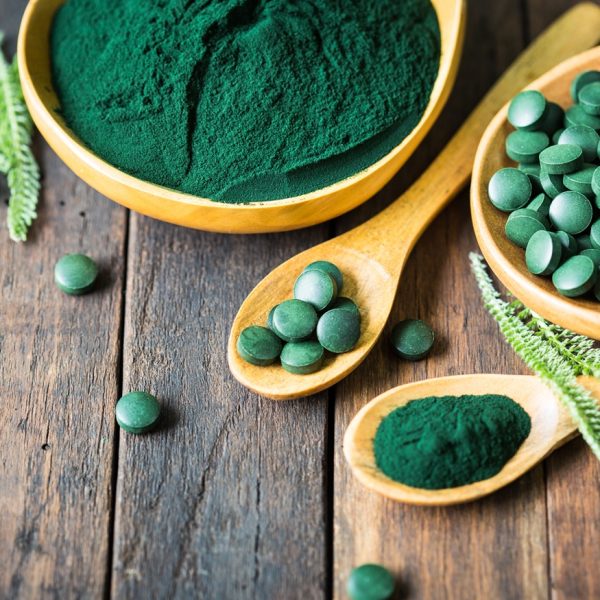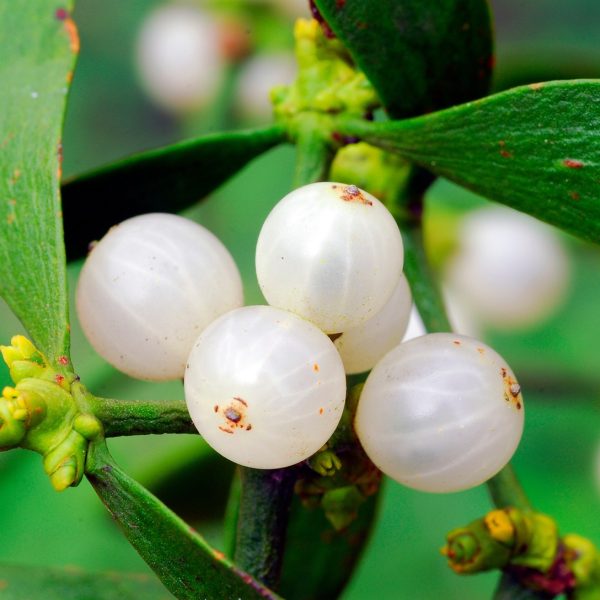Menopause is a natural transition for all women and people assigned female at birth. Discover how to support associated symptoms and hormonal health with herbal medicine.
Understanding menopause

Menopause (also known as the climacteric) is a natural life event affecting all women and people assigned female at birth; it is defined as 12 months after the last menstrual period which usually occurs around 40–50 years of age (1). Menopause can be diagnosed in women not on contraception, who have not had a period for 12 months or who have had a hysterectomy, as long as other conditions have been excluded (2). Blood tests are not considered an accurate diagnostic tool due to fluctuating hormone levels although they may be used in individuals under 45 who are experiencing menopausal symptoms (2,3).
Perimenopause is the period of hormonal fluctuations lasting two to eight years prior to the cessation of menstrual periods (4). Due to hormonal changes, perimenopause can cause symptoms including irregular menstrual periods, hot flushes, sleep disturbances, migraines, breast pain and mood changes (5). Perimenopause can be diagnosed in women over the age of 40 if they are experiencing a combination of irregular periods and vasomotor symptoms via clinical case history taking (2).
The average duration of menopausal symptoms is eight years, although 10% of women experience symptoms for over 10 years (6). The Study of Women’s Health Across the Nation (SWAN) study revealed racial and ethnic differences in menopause, including vasomotor symptom duration; the longest was a median of 10.1 years experienced by African American women compared to 4.8 years in Japanese women (7).
As many as 20–40% of women experience depression during perimenopause, and women entering perimenopause with no prior history of depression were twice as likely to develop depressive symptoms in comparison to pre-menopausal women of a similar age (8,9). Anxiety and irritability are also common symptoms of menopause, and research has indicated associations with age, stress levels, depression, and sleep disturbance (10).
In postmenopause, symptoms can continue with lower oestrogen levels causing vaginal dryness, reduced libido as well as increased risk of cardiovascular disease and osteoporosis (11).
The majority of women experience some symptoms during menopause with variable severity with 25% of women describing symptoms as severe or debilitating (6,12).
However, there are treatment options, including conventional and herbal medicine as well as effective nutrition and lifestyle changes to ease the transition.
How does menopause work?

Menopause is a natural phase of life occurring at an average age of 51 (12). It happens due to there no longer being enough eggs to release, leading to reduced ovarian function and production of hormones, particularly oestrogen (6). For some people, a decline in hormones may occur due to a health related condition or treatment which then initiates menopause including:
- Surgical menopause: Total hysterectomy and bilateral oophorectomy (the uterus and ovaries are surgically removed)
- Chemical menopause: Medication which suppresses reproductive hormones
- Chemotherapy or radiation to the pelvic area
- Primary ovarian sufficiency (menopause occurring earlier than age 40 due to genetics or autoimmunity) (13,14)
In postmenopause, the body continues to make lower levels of oestrogen which is needed for various bodily functions; the ovaries produce small amounts of testosterone which can be converted to oestradiol, whilst the adrenal glands produce androstenedione which can be converted to oestradiol and oestrone in body fat (15).
During perimenopause, although reproductive hormone levels are generally declining, these levels fluctuate leading to higher levels of oestrogen and subsequent withdrawal; this can cause menstrual changes and other symptoms including hot flushes and mood swings (5). Mental health symptoms experienced during menopause are not fully understood, but it is known that the decline of oestrogen will lead to reduced stimulation of mood-regulating 5-HT2A binding receptors which is likely to impact serotonin levels and therefore, detrimentally on mood (16).
Whilst oestrogen fluctuations are thought to be the main cause of perimenopausal symptoms, there are also changes to other hormone levels in the body. Inhibin levels decline causing follicle-stimulating hormone (FSH) to increase (although it will fluctuate), whilst progesterone and anti-mullerian hormone reduce to lower levels (17).
The main conventional medicine treatment for menopausal symptoms is hormone replacement therapy (HRT), to replace the hormones oestrogen and progesterone, which comes in various forms including oral, transdermal, combination and monotherapy (18).
Other medications for menopausal symptoms include clonidine or gabapentin for hot flushes, vaginal oestrogen to address vaginal atrophy and antidepressants for low mood (19).
Historically, many women chose not to take HRT due to the results of the Women’s Health Initiative study, which demonstrated an increased risk of breast cancer, coronary events and blood clots (20). However, further research has demonstrated that HRT can reduce risk of cardiovascular disease in people starting HRT under the age of 60 (20). This highlights the importance of weighing up risks and benefits for each individual, taking into consideration their medical history and current state of health (2).
Signs and symptoms of menopause
- Hot flushes
- Night sweats
- Joint pain
- Anxiety
- Depression
- Fatigue
- Irregular periods
- Menstrual changes in flow
- Vaginal dryness
- Dry skin
- Thinning hair
- Painful sex
- Reduced libido
- Changes with urination
- Brain fog
- Sleep disturbance
Herbal remedies for menopause
Herbal medicine is a viable option for women who are struggling with menopause. Some individuals may not wish to take HRT due to having experienced unmanageable side effects. This includes having an increased risk due to a history of hormone dependent cancer, or simply wanting to explore alternative routes. In addition, medication may help some symptoms but not others. Herbal medicine can work well on its own as well as alongside conventional medicine. A qualified practitioner will confirm contraindications and prescribe herbs suitable for each individual.
Some herbal medicines have become well known in supporting the menopausal transition including black cohosh (Actea racemosa), sage (Salvia officinalis) and red clover (Trifolium pratense). Exploring the mechanisms of action of these herbs and others offers some insight into their medicinal benefit.

Hormonal balance
Phytoestrogens are substances found in plants that mimic biological oestrogen. Phytoestrogens are weaker than biological oestrogen in the body and compete for oestrogen receptors so can have a lowering or increasing effect depending on the levels of oestrogen present in the body (21). Phytoestrogens are particularly helpful in cases of fluctuating and lowered levels of oestrogens.
Red clover
Red clover contains isoflavones, a type of phytoestrogen effective for balancing hormones (21). It is worth noting that isoflavones do not extract well in water, therefore an alcohol extraction is preferable for optimising efficacy of the herb (5).
One study found that red clover was more effective than black cohosh at reducing anxiety and vasomotor symptoms in postmenopausal women (22). Authors hypothesised that the efficacy of red clover on anxiety is due to its agonist action on the oestrogen-receptor Beta (ERβ) (22). Furthermore, as one clinical study demonstrated, it appears to have a positive effect on bone density. A red clover isoflavone extraction of 57–85.5 mg significantly increased bone mass density in postmenopausal women at the proximal radius and ulna (23).
Hot flushes
Black cohosh
Clinical research has identified the effectiveness of black cohosh in reducing vasomotor symptoms (2). Whilst it was initially thought that black cohosh had phytoestrogenic action, it is now understood that its activity is indirect. Research has demonstrated its weak oestrogenic-like effects on the vaginal mucosa, whilst not affecting the uterus (24). As such, it is thought to be a potentially safe option for menopausal women who have, or are at risk of, breast cancer, and has demonstrated apoptosis of breast cancer cells (25).
Not only is black cohosh helpful for reducing the length and severity of hot flushes, it is also indicated for rheumatism and myalgia and thus is helpful for women who are also experiencing joint pain during menopause (26).
Sage
Sage has been traditionally used and is widely accepted to help with menopausal symptoms, in particular for hot flushes. One meta-analysis found that it reduced the severity and frequency of hot flushes in postmenopausal women (27). It is anhidrotic, meaning that it reduces sweating both in menopause and other instances (26). Furthermore, clinical research has demonstrated no change to oestrogen levels following intervention (28,29).
Sleep
Disturbed sleep is common during menopause and may be related to night sweats, stress, hormone levels, blood sugar imbalance or a variety of other reasons. Identifying causative factors can be helpful in a treatment plan. Herbs such as passionflower (Passiflora incarnata), valerian (Valeriana officinalis) and hops (Humulus lupulus) are sedative herbs that can support a restful sleep; hops can be particularly helpful around menopause as it is also phytoestrogenic (30).
Mood
Adaptogens are herbs which help the body adapt to stress, balancing the hypothalamic-pituitary-adrenal (HPA) axis which helps to alleviate mood related symptoms of menopause (31). However, adaptogens have varying actions, and for example, some are stimulating whilst others are more relaxing. There are certain adaptogens specifically suited to the menopause such as ashwagandha (Withania somniferum), schisandra (Schisandra chinensis), Siberian ginseng (Eleutherococcus senticosus) and shatavari (Asparagus racemosus). Each has its own character, properties and actions and may be more suited to one individual than another.

Schisandra
Schisandra is described in traditional Chinese medicine (TCM) as having the five flavours: sweet, sour, bitter, pungent and salty (31). It helps reduce menopausal sweating, balances the immune system and supports the endocrine and nervous systems.
Herbs classified as nervines refer to any herb which has an effect on the nervous system, whether via a stimulating, relaxing or restorative effect. There are many herbs to consider for support with mood during menopause, such as lemon balm (Melissa officinalis), rose (Rosa damascena) and oat straw (Avena sativa).
St John’s wort
St John’s wort (Hypericum perforatum) is a popular herb used to treat depression with current research also confirming this action (32). In addition, some studies have investigated its use for menopausal symptoms; one study found St John’s wort was significantly more effective than placebo in improving quality of life in perimenopausal women (33). Another found that it significantly reduced hot flushes and depression in postmenopausal women (34). It is, however, contraindicated with a number of conventional medications including HRT and usage should be considered on an individual basis with the support of a medical herbalist (35).
Adrenal support
The adrenals take on the role of oestrogen production during menopause, therefore adrenal support is a consideration, especially if someone has been under high levels of stress. Liquorice (Glycyrrhiza glabra), Siberian ginseng and ginseng (Panax ginseng) are tonics for the adrenals. Ginseng, and Siberian ginseng, to a lesser extent, are considered to be more stimulating so short-term use may be more suitable, depending on the individual (21).
Holistic menopause solutions

Many believe that cultural and societal factors can have a significant impact on a person’s experience of menopause. This is relevant not only at the time that an individual is going through the transition, but also with earlier life experiences.
A woman’s emotional, mental and physical health and outlook could be key to the severity of their symptoms (4). Engaging in psychotherapy at this time of life could be helpful for some women. Cognitive behavioural therapy forms part of the NICE guidelines as research supports its use in improving mood, reducing hot flushes and other symptoms (2).
For some, it may be time to slow down and take time out to rest; for others, it may be time to try new challenges or make some changes. For each person, it is a unique journey.
Nutrition and lifestyle
Nutrition and lifestyle factors are an important, often overlooked, part of transitioning menopause and considering these can be key to optimising health and wellbeing.
Certain food and drinks and environmental factors such as coffee, spicy food and smoking can trigger hot flushes, but this can vary from person to person. Identifying and excluding or changing these could be helpful (36).
Phytoestrogens exist in a range of foods, with higher levels in soya and flaxseed; some studies have indicated an improvement in menopausal symptoms from consumption, although further research is needed (21,37). Fermented soy products such as tempeh and natto as well as flaxseed have additional benefits in supporting the gut flora (38,39).
Healthy exercise, including aerobic and strength training, is important at this stage of life to support metabolism, cardiovascular health and increase bone density (40).
References
- Menopause. Mayo Clinic. 7 August, 2024. Accessed 3 February, 2025. https://www.mayoclinic.org/diseases-conditions/menopause/symptoms-causes/syc-20353397
- National Institute for Health and Care Excellence. Recommendations | Menopause: identification and management | Guidance. NICE. 12 November, 2015. Accessed January 24, 2025. https://www.nice.org.uk/guidance/ng23/chapter/Recommendations#diagnosis-of-perimenopause-and-menopause
- British Menopause Society. NICE: Menopause, Diagnosis and Management – from Guideline to Practice Guideline Summary. Published online 2022. Accessed 03 February 2025. https://thebms.org.uk/wp-content/uploads/2024/11/09-BMS-TfC-NICE-Menopause-Diagnosis-and-Management-from-Guideline-to-Practice-Guideline-Summary-NOV2024-A.pdf
- Romm A. Botanical Medicine for Women’s Health. 2nd ed. Elsevier; 2018.
- Trickey R. Women, Hormones and the Menstrual Cycle. 3rd Edn. Trickey Enterprises (Victoria) Pty Ltd.; 2011.
- Society of Endocrinology. Menopause. You & Your Hormones. September, 2024. Accessed 28 January, 2025. https://www.yourhormones.info/endocrine-conditions/menopause/
- Avis NE, Crawford SL, Greendale G, et al. Duration of menopausal vasomotor symptoms over the menopause transition. JAMA Intern Med. 2015;175(4):531-539. http://dx.doi.org/10.1001/jamainternmed.2014.8063
- 8. Cohen LS, Soares CN, Vitonis AF, Otto MW, Harlow BL. Risk for new onset of depression during the menopausal transition: the Harvard study of moods and cycles: The Harvard study of moods and cycles. Arch Gen Psychiatry. 2006;63(4):385-390. http://dx.doi.org/10.1001/archpsyc.63.4.385
- MGH Center for Women’s Mental Health. Essential Reads: Who is at Risk for Depression During the Perimenopause? MGH Center for Women’s Mental Health – Perinatal & Reproductive Psychiatry at Mass General Hospital. 3 November, 2021. Accessed February 3, 2025. https://womensmentalhealth.org/posts/essential-reads-who-is-at-risk-for-depression-during-the-perimenopause/
- Bremer E, Jallo N, Rodgers B, Kinser P, Dautovich N. Anxiety in menopause: A distinctly different syndrome? J Nurse Pract. 2019;15(5):374-378. http://dx.doi.org/10.1016/j.nurpra.2019.01.018
- After the menopause. NHS inform. 13 February, 2023. Accessed February 3, 2025. https://www.nhsinform.scot/healthy-living/womens-health/later-years-around-50-years-and-over/menopause-and-post-menopause-health/after-the-menopause/
- British Menopause Society. What is the Menopause? Published online 2022. https://thebms.org.uk/wp-content/uploads/2023/08/17-BMS-TfC-What-is-the-menopause-AUGUST2023-A.pdf
- Menopause. University of Utah Health | University of Utah Health. 6 April, 2021. Accessed February 3, 2025. https://healthcare.utah.edu/womens-health/gynecology/menopause
- Andrew L. Understanding Medically Induced Menopause. Menopause Care. Date unknown. Accessed February 3, 2025. https://www.menopausecare.co.uk/blog/medically-induced-menopause
- Estrogen and Postmenopause. SheCares. 12 July, 2018. Accessed 3 February, 2025. https://www.shecares.com/hormones/estrogen/postmenopause
- Steiner M, Dunn E, Born L. Hormones and mood: from menarche to menopause and beyond. J Affect Disord. 2003;74(1):67-83. http://dx.doi.org/10.1016/s0165-0327(02)00432-9
- The American Society for Reproductive Medicine. The Menopausal Transition Journey. reproductivefacts.org. 2025. Accessed 3 February, 2025. https://www.reproductivefacts.org/patient-journeys/menopausal-transition-patient-journey/
- Types of hormone replacement therapy (HRT). nhs.uk. 9 March, 2023. Accessed 3 February, 2025. https://www.nhs.uk/medicines/hormone-replacement-therapy-hrt/types-of-hormone-replacement-therapy-hrt/
- Menopause – Treatment. nhs.uk. 17 May, 2022. Accessed 3 February, 2025. https://www.nhs.uk/conditions/menopause/treatment/
- Women’s Health Concern. HRT: The History. Published online 2022. Accessed 02 February 2025. https://www.womens-health-concern.org/wp-content/uploads/2022/11/10-WHC-FACTSHEET-HRT-The-history-NOV22-A.pdf
- Brice-Ytsma H, McDermott A. Herbal Medicine in Treating Gynaecological Conditions. Aeon Books Ltd; 2020.
- Geller SE, Shulman LP, van Breemen RB, et al. Safety and efficacy of black cohosh and red clover for the management of vasomotor symptoms: a randomized controlled trial: a randomized controlled trial. Menopause. 2009;16(6):1156-1166. http://dx.doi.org/10.1097/gme.0b013e3181ace49b
- Clifton-Bligh PB, Baber RJ, Fulcher GR, Nery ML, Moreton T. The effect of isoflavones extracted from red clover (Rimostil) on lipid and bone metabolism. Menopause. 2001;8(4):259-265. http://dx.doi.org/10.1097/00042192-200107000-00007
- Wuttke W, Seidlová-Wuttke D, Gorkow C. The Cimicifuga preparation BNO 1055 vs. conjugated estrogens in a double-blind placebo-controlled study: effects on menopause symptoms and bone markers. Maturitas. 2003;44 Suppl 1:S67-S77. http://dx.doi.org/10.1016/s0378-5122(02)00350-x
- Einbond LS, Wen-Cai Y, He K, et al. Growth inhibitory activity of extracts and compounds from Cimicifuga species on human breast cancer cells. Phytomedicine. 2008;15(6-7):504-511. http://dx.doi.org/10.1016/j.phymed.2007.09.017
- Thomsen M. The Phytotherapy Desk Reference. 6th Edn. Aeon Books Ltd; 2022.
- Moradi M, Ghavami V, Niazi A, Seraj Shirvan F, Rasa S. The effect of Salvia Officinalis on hot flashes in postmenopausal women: A systematic review and meta-analysis. Int J Community Based Nurs Midwifery. 2023;11(3):169-178. http://dx.doi.org/10.30476/IJCBNM.2023.97639.2198
- Bommer S, Klein P, Suter A. First time proof of sage’s tolerability and efficacy in menopausal women with hot flushes. Adv Ther. 2011;28(6):490-500. http://dx.doi.org/10.1007/s12325-011-0027-z
- Rad S, Forouhari S, Dehaghani AS, HomeiraVafaei, Sayadi M, Asadi M. The effect of salvia officinalis tablet on hot flashes, night sweating, and estradiol hormone in postmenopausal women. International Journal of Medical Research and Health Sciences. 2016;5:257-263. https://www.semanticscholar.org/paper/The-effect-of-salvia-officinalis-tablet-on-hot-and-Rad-Forouhari/edab55154d5f74762dfcd56dff450e0db382d456
- Thiele J. Sleep: How it works and herbs to support it. Herbal Reality. 15 December, 2022. Accessed February 3, 2025. https://www.herbalreality.com/health-lifestyle/stress-sleep/sleep-how-it-works-herbs/
- Winston D, Maimes S. Adaptogens. Healing Arts Press; 2019.
- St. John’s wort. Mayo Clinic. 10 August, 2023. Accessed 4 February, 2025. https://www.mayoclinic.org/drugs-supplements-st-johns-wort/art-20362212
- Al-Akoum M, Maunsell E, Verreault R, Provencher L, Otis H, Dodin S. Effects of Hypericum perforatum (St. John’s wort) on hot flashes and quality of life in perimenopausal women: a randomized pilot trial: a randomized pilot trial. Menopause. 2009;16(2):307-314. http://dx.doi.org/10.1097/gme.0b013e31818572a0
- Eatemadnia A, Ansari S, Abedi P, Najar S. The effect of Hypericum perforatum on postmenopausal symptoms and depression: A randomized controlled trial. Complement Ther Med. 2019;45:109-113. http://dx.doi.org/10.1016/j.ctim.2019.05.028
- St. John’s Wort Side Effects. Drugs.com. 2025. Accessed 4 February, 2025. https://www.drugs.com/sfx/st-john-s-wort-side-effects.html
- Hot Flashes. Cleveland Clinic. 21 October, 2024. Accessed 3 February, 2025. https://my.clevelandclinic.org/health/symptoms/15223-hot-flashes
- Richards L, Richter A. Foods high in estrogen: Benefits, examples, and side effects. 29 January, 2021. Accessed 4 February, 2025. https://www.medicalnewstoday.com/articles/foods-high-in-estrogen
- Stiemsma LT, Nakamura RE, Nguyen JG, Michels KB. Does consumption of fermented foods modify the human gut Microbiota? J Nutr. 2020;150(7):1680-1692. http://dx.doi.org/10.1093/jn/nxaa077
- Brahe LK, Le Chatelier E, Prifti E, et al. Dietary modulation of the gut microbiota–a randomised controlled trial in obese postmenopausal women. Br J Nutr. 2015;114(3):406-417. http://dx.doi.org/10.1017/S0007114515001786
- NHS. EXERCISE, NUTRITION, AND LIFESTYLE IN MENOPAUSE. Published online 2023. Accessed 02 February, 2025. https://mft.nhs.uk/app/uploads/sites/4/2024/04/SMPIL-24-007-Exercise-Nutrition-Lifestyle-in-Menopause.pdf

